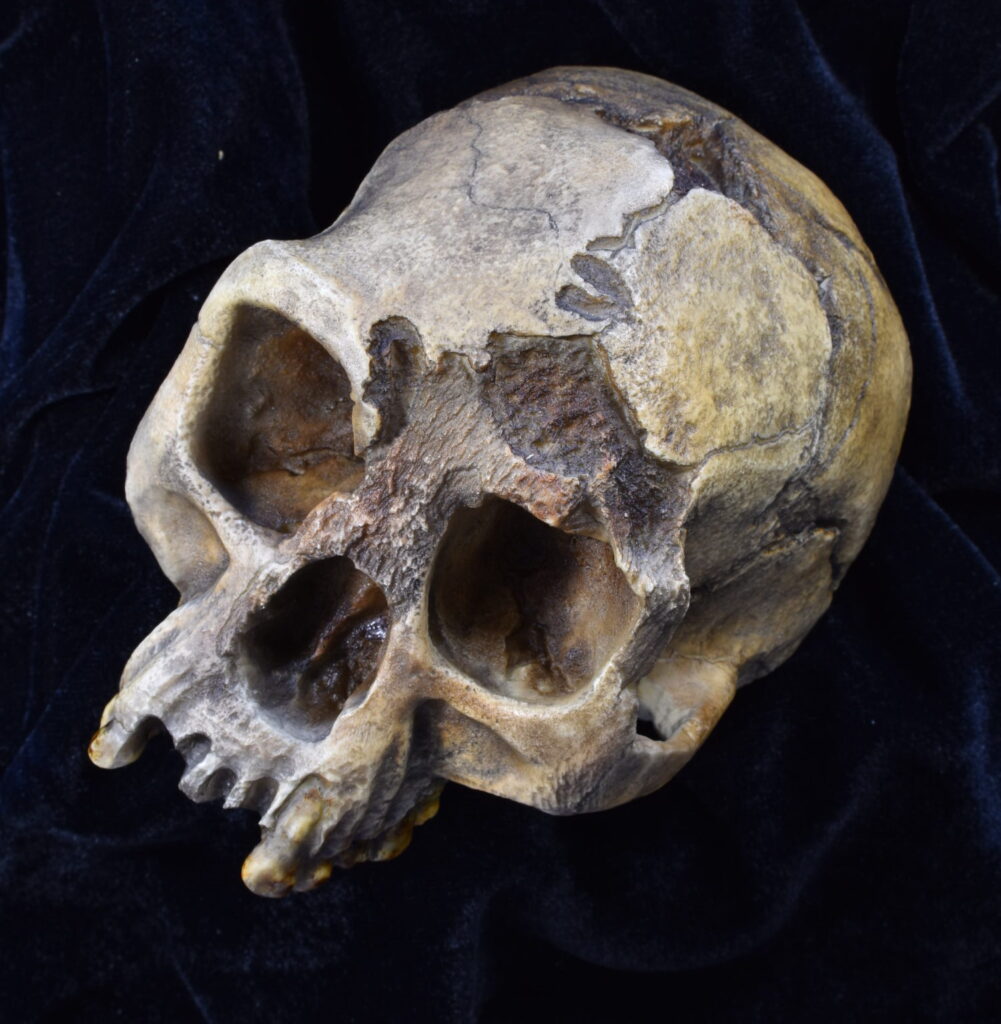Homo floresiensis
AAC Catalogue Number: 2007.1.
Dates: Original Date: 95,000 – 12,000 years ago; Revised Date: 700,000 – 50,000 years ago
Geographic Range: Flores, Indonesia
Anatomical Features:
- Homo floresiensis was very small compared to other hominins: roughly 1 meter (3.2 feet) tall, 16-29 kilograms (35 to 65 pounds).
- No chin
- Elongated low brain case
- Long arm to leg length rati
Technology Used: The technology used by Homo floresiensis, including simple flakes, points, blades, bladelets, and perforators, indicates a possible technological overlap with Homo sapiens.
Diet: Tooth morphology is similar to that of Homo sapiens, likely indicating an omnivorous diet. There is also possible evidence for butchery and cooking found at Liang Bua Cave in Flores, Indonesia.
Other Info:
- The original dating, as cited in the Bone Clones description, is under dispute. More recent dating suggests that Homo floresiensis lived ca. 700,000-50,000 years ago.
- Previously the small skull size of the first Homo floresiensis specimen discovered, LB1, was thought to be the result of birth defects (microcephaly), but this theory has since been disproven. Most scholars now agree that the small size of Homo floresiensis was the result of island dwarfism.
Remaining Questions:
- What is the true date and geographic range of these hominins?
- What was the relationship between H. floresiensis and other hominins in East Asia?
- How did H. floresiensis get to Indonesia in the first place?
Description (from Bone Clones):
“18,000 YA. The Homo floresiensis skull (Flores Skull LB1) was discovered by P. Brown and his team on the island of Flores, Indonesia, in 2003 and reported in Nature in 2004. A skeleton of this species, which has been designated as female because of the characteristics of the pelvis, shows that in maturity she was only about 3.3 feet tall with a small cranial capacity of only 380 cc. Another Homo species in existence only 18,000 YA could be one of the most important discoveries in decades. Stone tools and evidence of butchery were also found at this site. H. floresiensis is the subject of much debate centering on whether it is a new human species, a pathological H. sapiens, or a case of insular dwarfism of a small H. erectus population.”

